Understanding Live Streaming Video Options for Action Cams: GoPro, Sony and HTC
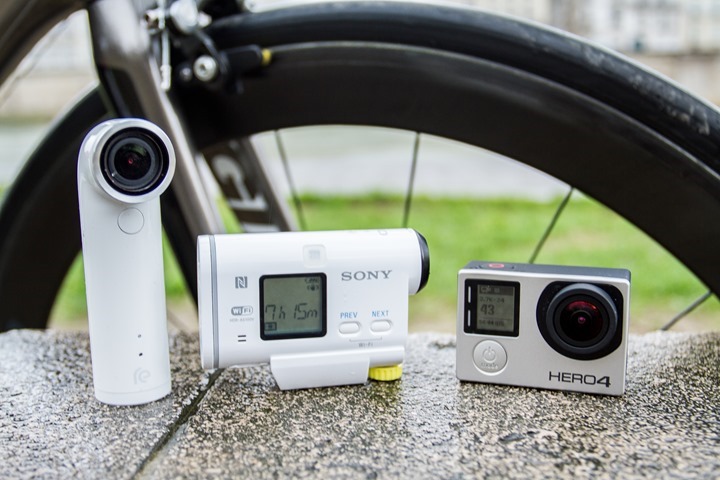
The ability to stream in real time (live) video footage from action cams remains a bit of the holy grail of sports action. Today, 99.99% of what you see on TV is done via broadcast quality cameras and equipment, with almost nothing in the consumer realm. These solutions generally rely on cameras connecting to traditional near-range satellite uplink transmitters, which aren’t typically using cellular networks or WiFi.
Some folks within the Pro Cycling scene have been testing some GoPro based solutions down in Australia the past few months, using cellular LTE networks to broadcast that footage. But, the solution is very much home grown and not likely to easily find itself in the hands of consumers.
Over the past year or so a few solutions have come onto the market that allow you to pair a normal action camera with your phone and then broadcast that footage to the world. I figured it might be interesting to run through what’s available today and how well it actually works.
Note that this is all quite different from the solution that GoPro announced at CES for broadcast use, which is going to be shown this past week by ESPN as part of the X Games, and the NHL shortly in demonstration snippets. That solution is designed to relay the GoPro signal a short-distance wirelessly to other broadcast quality receivers where it picks it up and then transmits it like normal (no WiFi or Cellular used). Said differently: That solution will likely cost a boatload and be aimed at broadcast TV, whereas what I outline below is aimed mostly at DIY type deployments.
The Basics:
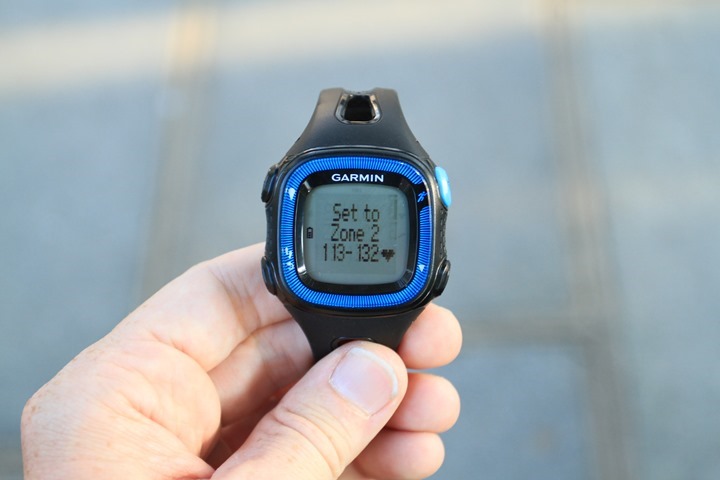
All of the solutions I talk about here are designed to leverage your cell phone to broadcast the action cam’s video stream to an online platform.
How each of these cameras does it varies slightly. Some have dedicated apps made by the same company as the camera (HTC), some have 3rd party apps that leverage the camera to broadcast on 3rd party services (GoPro), and then finally some are using a WiFi hotspot that your phone has to establish with no apps at all (Sony).
The point being though that at the end of the day, you’re using your phones cellular data connection to broadcast. Typically in order for you to have any hope of success you’ll need a 4G or LTE network connection on your phone. Additionally, you’ll likely want to have a data plan that is either unlimited, or enough GB’s so that you aren’t costing yourself a small fortune.
Note that there is one action camera out there that I saw at CES that has a built-in LTE chipset in it. Or rather, has it built into the action camera document.
HTC RE with YouTube:
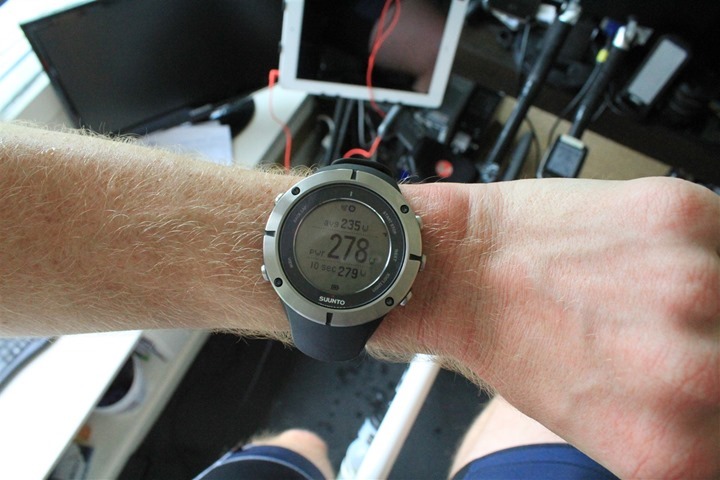
I’m actually going to start with the camera that probably nobody knows about, yet actually does this quite well. You might think someone like GoPro would rock this, but today they’re more like a rock when it comes to live streaming.
So first up we’ve got the HTC RE action camera. While many on the playground might make fun of this little periscope shaped guy, I kinda like it. The software is silly simple to use, and they’ve thought through some of the pairing process pieces better than GoPro. For example, it goes off and finds the camera via Bluetooth and then takes care of the WiFi piece for you. Whereas GoPro with the Hero4 lineup also has Bluetooth pairing to kick start the process, but I find it often really finicky to get setup the first time and is overly complicated.
At any rate, when it comes to streaming, HTC announced the functionality at CES and followed up with Android-first streaming options. The iOS update for streaming is coming later this quarter. So in order to do this today you’ll need Android, along with the latest firmware version (which is done via the Android app, also a nice touch).
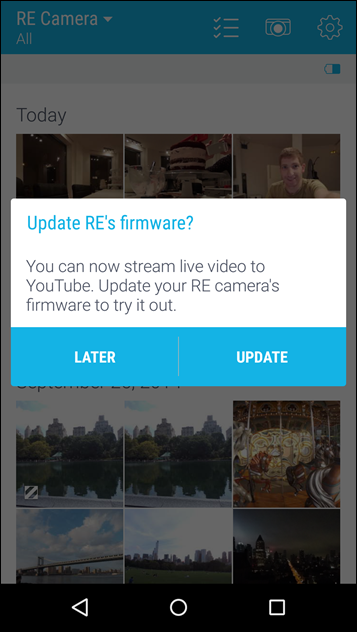
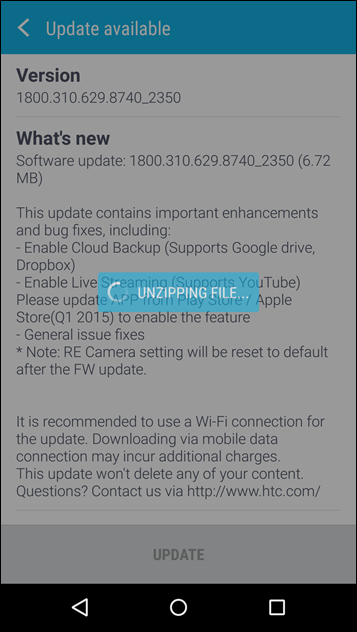
With that all set, you’ll see an option in the menu to live stream the camera, which then associates with a YouTube account.

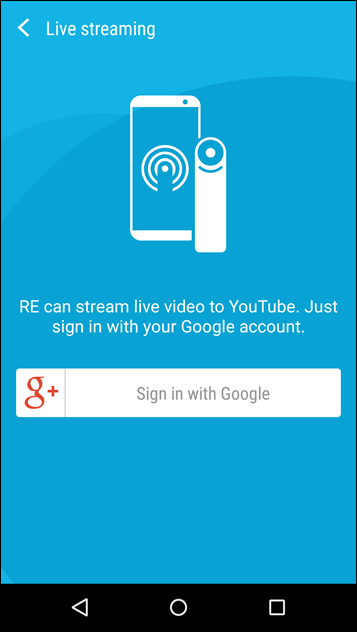
You’ll then be asked to enable and verify your YouTube account for live streaming. The app poorly renders the YouTube pages, but it’s OK, it all works out.
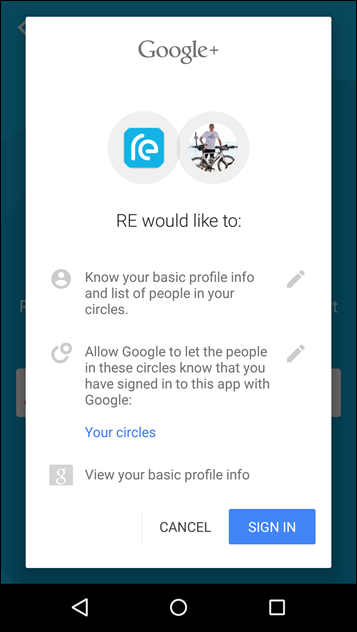
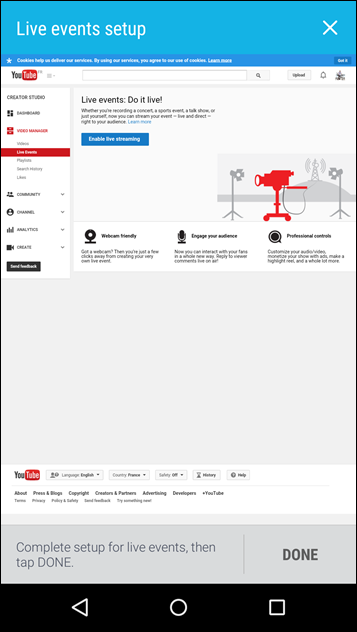
Once you’re done there, go ahead and click the ‘Done’ button at the bottom of the app.
Then the app will walk you through setting up whether or not you want any contacts notified, or if you want the session listed as Public or Unlisted. Oddly, you can only notify people via text message and not via e-mail. In any case, once that’s done you can go ahead and actually start a live activity.
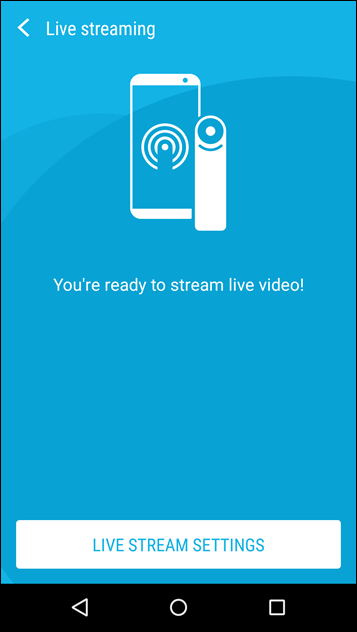
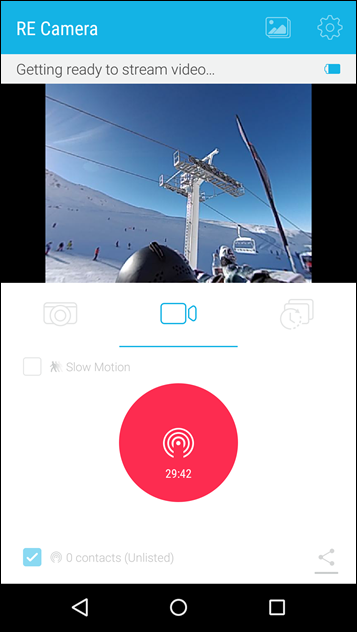
Now with that set you can simply go back to the main page and you’ll see a live streaming icon at the bottom. Just check that. That’s it. Note that you have to be connected to a mobile/cellular network, you can’t use WiFi in the house/office on your phone, because the WiFi connection is being used to connect to the HTC camera already.
Then, just click the big circular button to start. It’ll take a few seconds to get the stream up and running and during that time the aspect ratio of the preview image will change a bit. It’ll also start a 30-minute count-down timer, which is the per-video limit that HTC has setup.
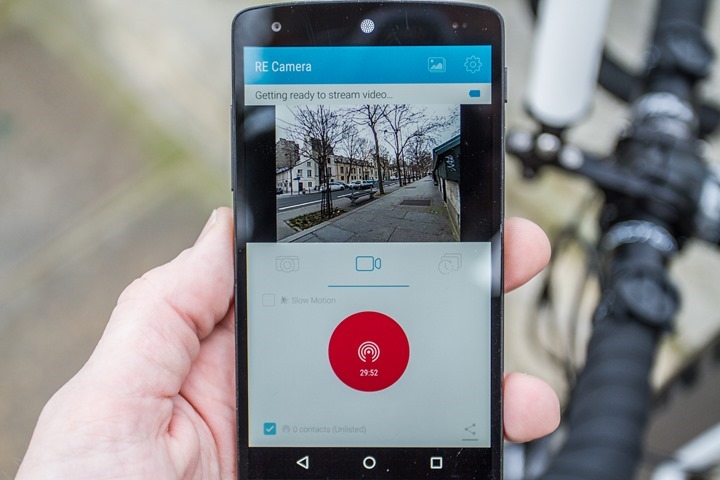
Then it switches over and shows it as live:
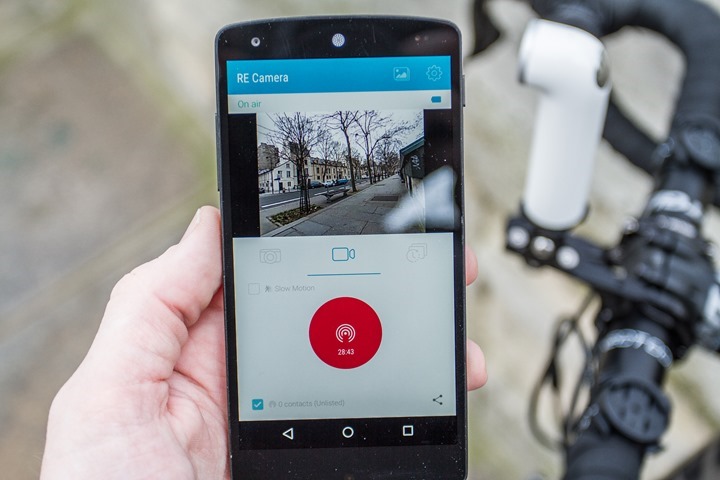
If you were to go to YouTube, you’d actually see the broadcast there live as well – it’ll initially show up with a simple cover screen before going to the live feed once initialized.

However, you can also get the link for the broadcast by tapping the little sharing icon in the bottom right and selecting ‘Copy to Clipboard’. You could also use this to share to numerous apps like Twitter and others:
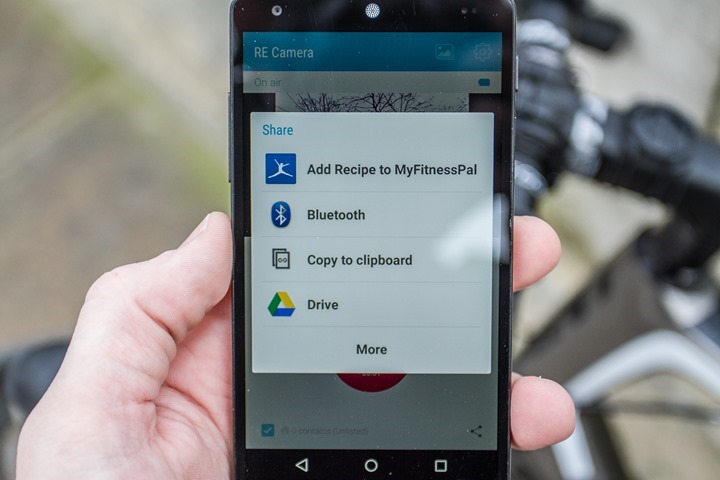
Also note that you could have changed the settings to be public or private:
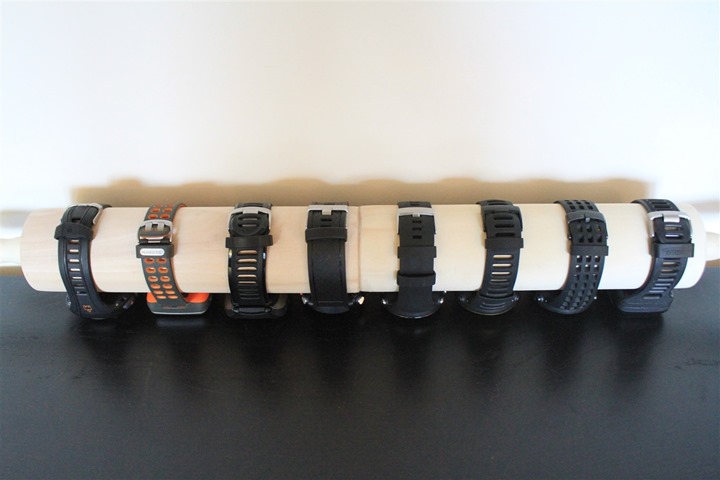
Now, in my testing I had some initial troubles because the app wasn’t correctly recognizing/setting which YouTube account of mine to use (just a minor warning for those with multiple Google identities). Once I got past that though, it was smooth sailing.
Here’s an example of a simple recorded bike loop on it. Note that unlike the GoPro I’m able to simply power off my phone screen and stick it in my pocket, whereas with the GoPro options I have to be careful to not shut off the screen or it’ll kill the feed.
The resiliency is pretty good, as it doesn’t end the video session when the cellular connection isn’t strong enough – instead it just temporarily goes offline (whereas Sony resets the video). As a result, in the recorded video seen above you’ll see it briefly skip sections.
It does oddly though go from a 16:9 formatted video stream down to 4:3, so it looks weird on YouTube within the player, with the side black bars. Additionally, I found that the saving of videos after the fact on YouTube is often somewhat inconsistent. Sometimes it’ll save – and other times it’ll fire a blank. If there are a bunch of sections missing content due to cell dropouts though, it’ll take quite a while to post – but eventually the recorded video will show up with the missing sections removed.
In a lot of ways, if HTC were to just slightly smooth out some of the setup pieces, it would probably take the cake as the best overall implementation – primarily due to the use of YouTube rather than for-pay companies like uStream and Livestream.
GoPro Hero3 & Hero4 with Livestream:
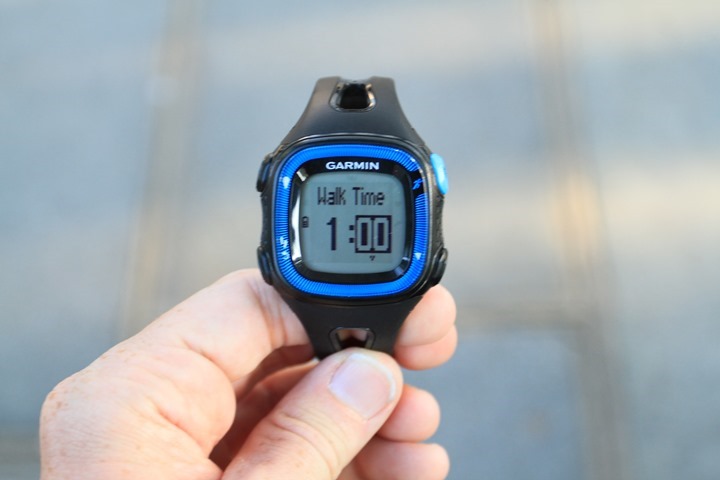
Next up we’ve got GoPro’s ability to connect with Livestream (that’s the name of the service). Livestream has been around a while in the internet streaming business, but they added support for GoPro units this past fall.
The way it works is you use Livestream’s app, which connects via WiFi to your GoPro. This is supported on the GoPro Hero3 and Hero4 cameras. The app uses your existing Livestream account. With their service you can get a free account to use for these purposes. There are some limitations with the free account, but most of it is related to branding.
Once you’ve got the app installed you’ll simply connect your phone to your GoPro’s WiFi network, the same exact way you might do if you were using the GoPro app to control your camera (except, don’t open the GoPro app up).
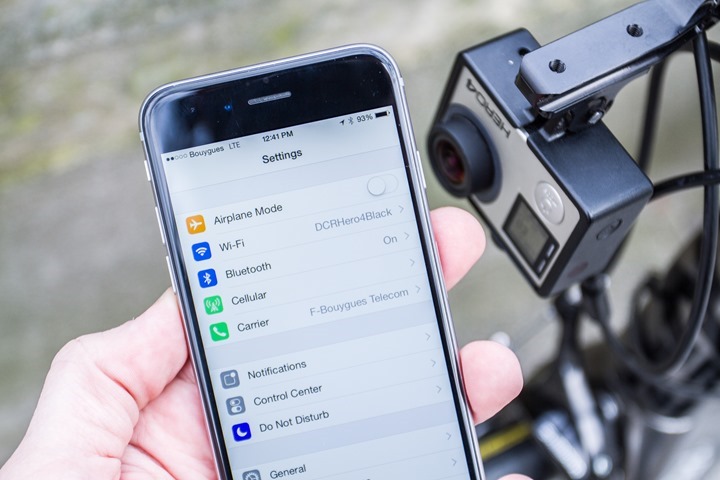
Once that’s done you’ll crack open the Livestream app and press the big red button at the bottom. This will allow you to then choose ‘GoPro’ from the list of video sources (in addition to your phone’s front/rear cameras).
Next, you can start streaming by pressing the red button. You’ll then see the current streaming rate available for the connection to the interwebs.
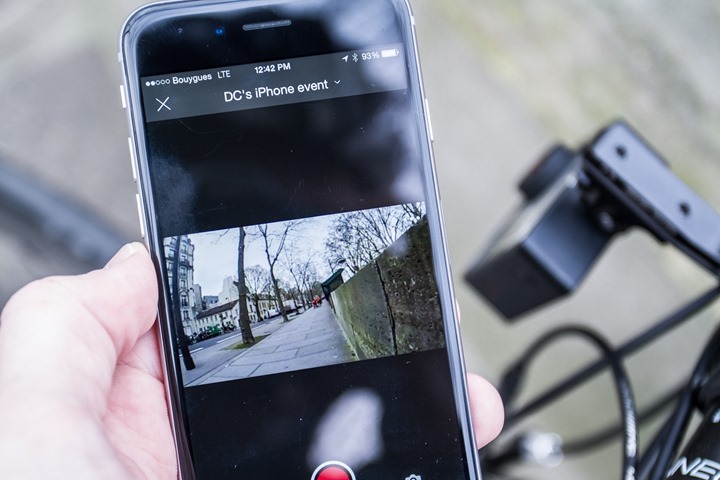
At the top you’ll have the option to tap to lock the screen. This is important, because you can’t tap the power button on your phone, as it’ll kill the app’s streaming. So you have to use their lock function and then carefully store the phone so it won’t turn off (good luck on that).
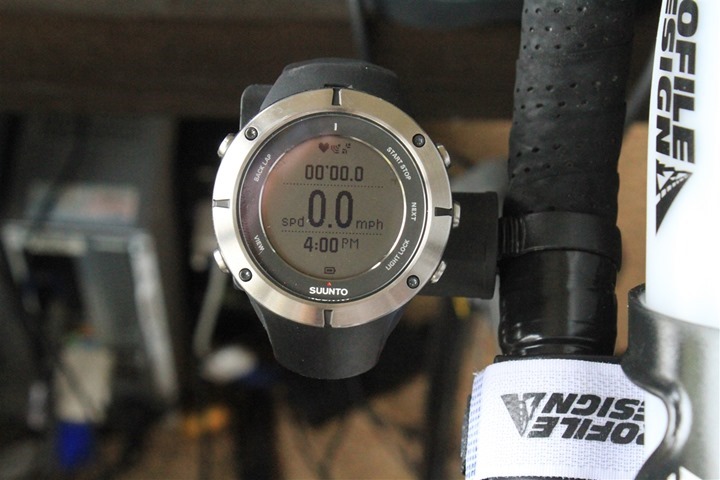
Now, it’s time to go for a ride. The service will have been streaming automatically to your account since you pressed the red button.
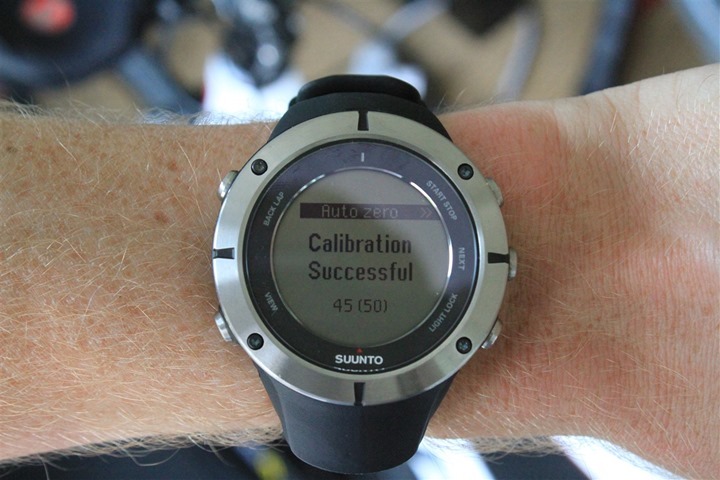
Now, as you can see below the quality is pretty poor (click on link to see on Livestream site)):

Afterwards when you end the session you’ll get the option to save and post the session, which will save it to Livestream’s web platform. The recordings will eventually get deleted though, assuming you have a free account. The good news is that you can at least download them after the fact. So with that capability, I downloaded the raw 540p clip and uploaded it to YouTube so you could easily see it:
Again, as noted, the quality is pretty poor. This is because Livestream isn’t using some fancy GoPro API to access the raw HD video stream. That’s in turn because no such HD video stream actually exists. Instead, the only thing accessible is the preview stream, which is super low resolution.
Here’s another clip I did while skiing. This one actually worked out fairly well given the conditions, in terms of maintaining the connection.
The one thing I wish here was that Livestream had a paid tier that didn’t cost as much as a cocaine delivery from Colombia. As services get more popular, and companies simply leverage YouTube, it’ll make Livestream much less appealing. Ironically, since you can download the recordings from their service after the fact, you can then put them up on a competitor’s site (YouTube, as I did above) – all without Livestream getting any money. Go figure, I would have paid a few bucks a month to just store them there.
(Side Note: 3rd party company Hang with (Hang W/) also just recently released support for GoPro cameras in doing something very similar. I’ve toyed with it a little bit, but it wasn’t working for me on the Hero4, just the Hero3. The app isn’t really targeted as much at sports though, but other events where you might have a more interactive conversation via text/chat as well.)
Sony Actions Cams with Ustream:
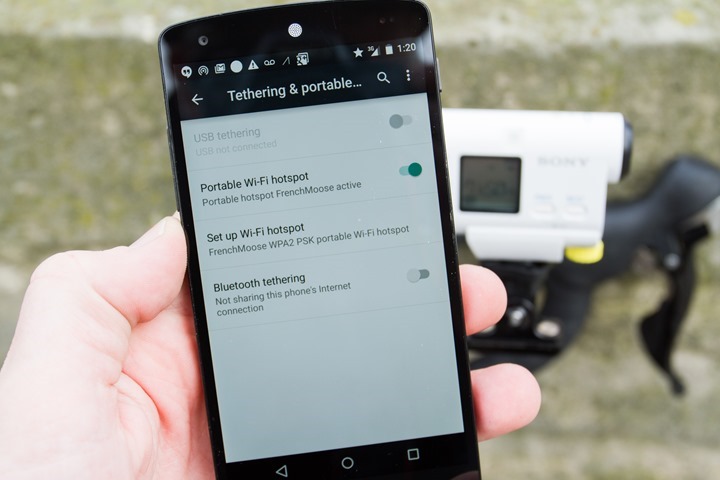
Next we’ve got Sony’s implementation that’s available on a few of their more recent action cameras. In my case I tested it on the HDR-AS100V (seen above). For streaming, Sony has partnered with Ustream as the ‘display’ side of the equation.
In Sony’s case the setup isn’t quite as clean as some of the others, but it’s not horrible either. You’ll need to first start by ensuring the firmware on your camera is from at least June of 2014, and then you’ll need to use their “Network Setting Tool” with your desktop computer to configure your WiFi networks.
With the Sony system you use WiFi to stream and there’s no dependency on a Sony app itself. So this can be connected to both regular house/office WiFi, or the WiFi hotspot on your phone. Whatever floats your boat. This does have the advantage of working with virtually any phone on the market – such as a Windows Phone where action cam support is highly limited.
Here’s the Network Setting Tool getting the WiFi access point configured:

Then we’ve got configuration of the streaming service, which is currently limited to Ustream. You can configure the title and description, as well as the resolution to either 720p (1280×720) or a sorta 480p (640×360).

Finally, you can configure it to automatically notify your social buddies on Facebook or Twitter.

Then you’ll push the settings to your camera:

Once that’s complete, you’re good to go settings-wise. Now, the one downside is that the unit can’t save more than one WiFi network. So in my case I had to reconfigure it after validating it on my regular WiFi network before changing it to my mobile phone network. Of course since there isn’t a phone app for that you have to think ahead a bit before leaving the house.
With that all set it’s time to go over to your action. This is where it actually gets super easy. All you do is just tap the next button until ‘Live’ shows up, which gets you ready to start broadcasting live. Oddly, it doesn’t actually connect to the WiFi access point quite yet – it just sits there:
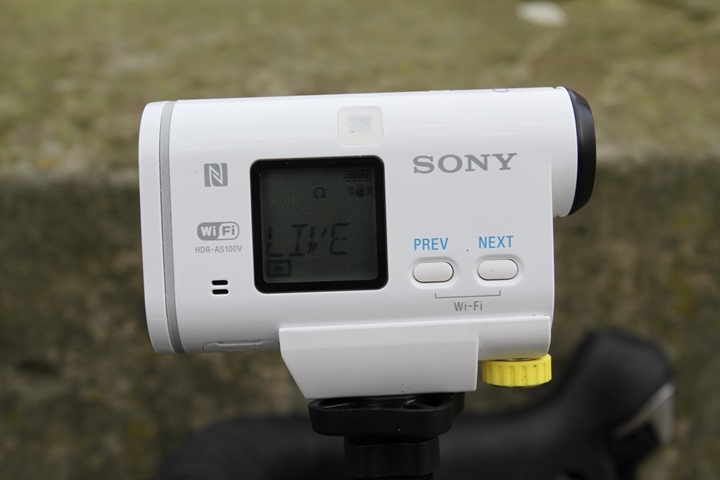
Then, you’ll hit the ‘Record’ button on the back, which will show you a Prep (for Preparing) message, followed by a confirmation that you’re live.
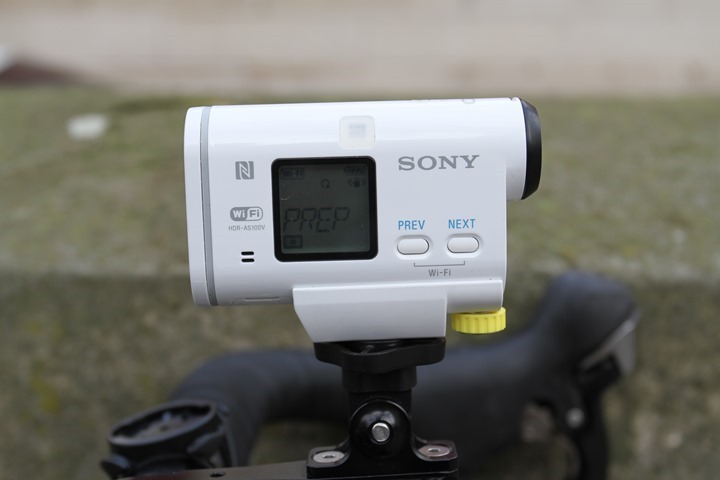
Now you’re actually live. Meanwhile, up top it’ll show you a light when someone connects, as well as the current viewer count on the display screen itself in the lower right corner (which is a nice touch):
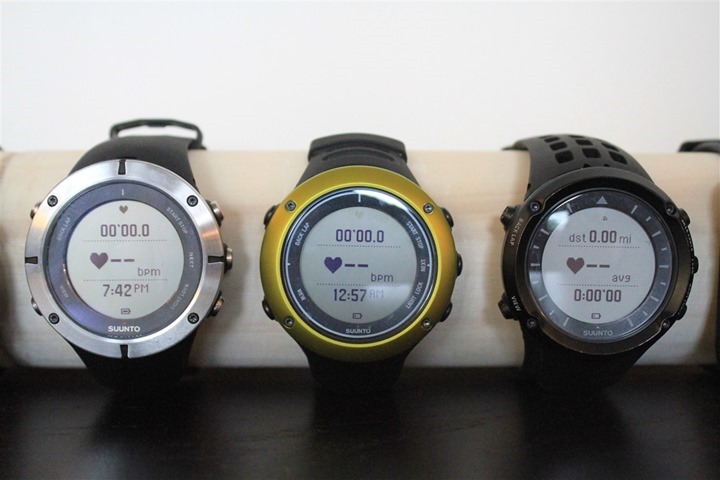
Finally, over on the Ustream site it’ll show the video being streamed:

Well, in theory anyway. I found about half the time it just flat-out didn’t work. I’d get super-short snapshots seen afterwards in the videos section, but it would never render the screen itself. And other times I could see the stream being shown in a bit of a ‘manager’ view, but while showing the channel as ‘Live’, it didn’t show anything more than a blank screen. It’s very finicky.
Now, the image resolution of the Sony with Ustream connection was clearly much better than that of GoPro with Livestream. However, it wasn’t much better on the frame rate site, so it was only a few frames per second with 720p footage, though with 480p it was a wee bit better.
Here’s a look at the footage that was recorded:
Broadcast live streaming video on Ustream
In many ways, the Sony solution is cleaner once you get past setup pieces, since it only requires any WiFi connection. That makes it great if you’re outside the Android/iOS universe. On the flip side, if your cell phone plan doesn’t have tethering enabled then you’re completely hosed since it can only connect to a WiFi network directly, not just using your phone’s LTE indirectly.
The Future:
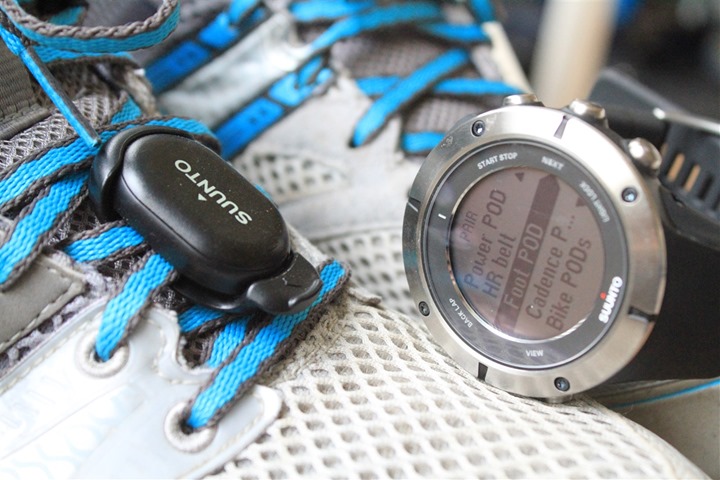
As you can see, at this point things ‘sorta work’. It streams some of the time, but that’s highly dependent on the connectivity. The individual solutions are further dependent on differing mobile app versions. Then you’ve got the quality aspect – which on the whole somehow takes us back to 1996 and AOL.
What’s interesting here is that there’s actually no technical barrier for any of these issues to exist. Ironically each company does one element of the service ‘correctly’. But putting them altogether in a single cohesive solution has remained elusive. As FaceTime will show you, you can get near-HD (or straight up HD) streamlining quality just fine over cellular LTE networks. In some way’s Sony is the closest to getting it right, though the setup of their solution is clunky having to use a desktop app. However, the ability to use it with any WiFi network (not dependent on Android and iOS is ideal).
I suspect you’ll see the ESPN and GoPro demonstration kick other action cam companies into gear though, as in the highly competitive action cam business nobody wants to feel as though they’re too far behind GoPro. Keep in mind though that solution is really aimed at broadcast companies though and not consumers.
Still, it’ll improve and I bet by the end of the year you’ll see some streaming solutions that work easily and don’t look so fugly.
Thanks for reading!











